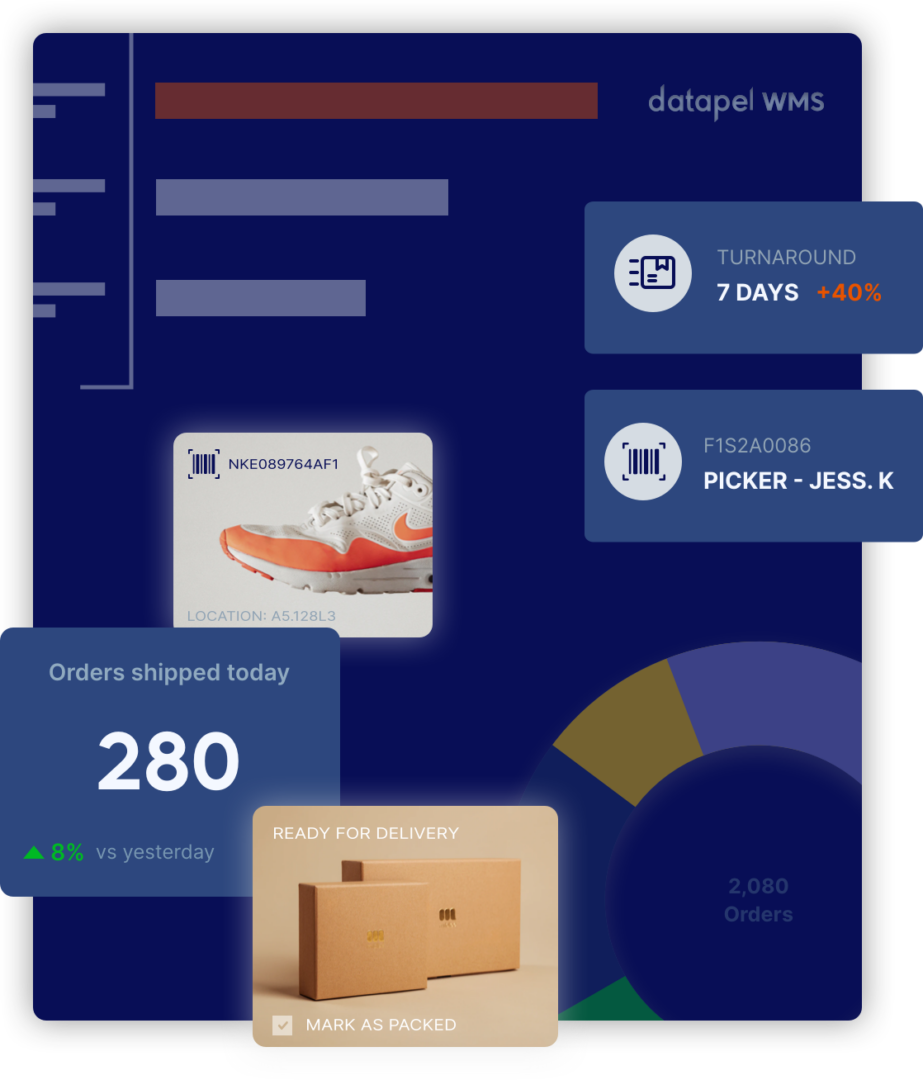The Ultimate Guide to Vendor Managed Inventory
Contents
In the current fiercely competitive business landscape, inventory and customer is king.
Vendor Managed Inventory (VMI) is a way to simplify inventory replenishment and collaboration between suppliers and customers. In consignment-managed inventory (CMI) the vendor owns the inventory until it’s sold, in Vendor Managed Inventory the vendor manages the inventory but the retailer owns the inventory.
The vendor managed inventory system allows suppliers to manage and monitor inventory levels so they can replenish in time based on data access to the customer’s stock. This article covers what is Vendor Managed Inventory, its benefits, challenges, implementation and future trends.
What is Vendor Managed Inventory?
Vendor Managed Inventory (VMI) is a business model where suppliers manage their product inventory at the customer’s site.
A VMI agreement is key to outlining the responsibilities and commitments of both parties. Instead of the customer orders based on sales trends or their calculations, the supplier monitors inventory levels and replenishes in time, reducing holding costs for both.
Essential Components of Vendor Managed Inventory

To effectively implement Vendor Managed Inventory, you need:
- A reliable supplier who can manage your inventory.
- Clear communication channels with your supplier.
- Accurate data on stock levels and sales forecasts.
- A way to track inventory in real time.
Good inventory management software is key to communication and data sharing between vendors and buyers.
Partnership
A partnership between supplier and customer is essential. Both must have the same business objectives, KPI and open communication channels. Transparency is key to VMI.
Data Sharing
Data sharing is the heart of VMI. Suppliers need access to sales data, current stock, current inventory data and customer forecasts to manage inventory and make decisions. Sharing stock data enables communication between retailers and suppliers so suppliers can make decisions on restocking and inventory management.
Metrics
Metrics are key to measuring VMI performance. KPIs are fill rate, inventory turnover rate, turn, stockouts and customer satisfaction.
Continuous Improvement
VMI is an ongoing process that needs to be monitored and improved. Regular reviews and collaboration help to optimise inventory and supply chain.
Benefits of Vendor Managed Inventory
Implementing VMI gives you:
- Better Inventory Management: VMI helps manage inventory levels in line with customer demand. By suppliers managing stock levels, businesses can ensure they have the right amount of inventory at the right time, reducing the risk of stockouts and overstock situations.
- Cost Savings: One of the main benefits of VMI is the reduction of inventory costs. By the vendor managing the inventory, businesses can reduce the costs of holding and managing excess stock. This also reduces the costs of overstock and inefficiencies. VMI also reduces inventory costs for both parties by replenishing stock only when needed, improving operational efficiency and creating a more predictable supply chain.
Supply Chain Efficiency
VMI improves supply chain efficiency by reducing stockouts and managing inventory and overstock situations. With real time data and proactive replenishment, suppliers ensure customers have the right product at the right time and minimise disruptions and delays.
Cost Reduction
By the supplier managing the inventory VMI optimises inventory and reduces holding costs. Reduces inventory-related costs and risk of excess inventory, obsolescence and emergency shipments.
Better Customer Service
VMI increases customer satisfaction by product availability and reducing lead times for purchase orders. Timely replenishment enables customers to meet their own customers’ demands.
Accurate Demand Forecasting
VMI gives suppliers visibility into customer inventory and demand patterns, so better demand forecasting and alignment of production and inventory.
How to Implement VMI

Implementing VMI requires planning and collaboration. A VMI system is an inventory management approach where the vendor manages the inventory levels on behalf of both the vendor and retailer. Here’s how:
Check Eligibility
Suppliers and customers need to check if VMI is suitable for them, product characteristics, demand patterns and the level of trust between parties.
Agreements
Agree on responsibilities, KPIs, data sharing and replenishment frequency. Outline roles and expectations for each party.
Integration
Seamless system integration between supplier and customer is key to VMI. This enables data sharing, real-time visibility and communication.
Training and Support
Provide training and support for the transition to VMI. This includes data-sharing protocols, new inventory, management and communication.
Continuous Improvement
Once VMI is live, continuous monitoring and improvement is key. Regular reviews, data analysis and collaborative problem-solving help to optimise the inventory process and VMI.
Vendor Managed Inventory Challenges
While VMI has many benefits it also has challenges. Unlike traditional inventory management where the buyer is responsible for monitoring stock levels and reordering as needed, VMI means the vendor is responsible for inventory decisions.
Trust and Partnership
VMI requires trust and partnership between supplier and customer. Building and maintaining this relationship can be difficult especially if there’s a history of adversarial relationships.
Data Accuracy and Sharing
Data accuracy and sharing are key to VMI’s success. Challenges are data accuracy, system compatibility and data security.
Cultural Change
VMI requires cultural change within an organisation. Both parties need to adopt a collaborative mindset and be willing to share information and decision-making.
Vendor Managed Inventory Tips

Here’s what you need to execute VMI:
- Open communication.
- Agree on shared KPIs and review them regularly.
- Define roles, responsibilities and expectations.
- Invest in system integration for data sharing.
- Train all stakeholders.
- Monitor and collaborate.
- Manage inventory effectively to reduce costs, optimise stock levels and improve operational efficiency through real-time inventory data sharing.
Vendor Managed Inventory Trends
As the supply chain evolves here are the trends:
- Advanced Analytics: AI and machine learning for better demand forecasting and proactive inventory management.
- Internet of Things (IoT): IoT devices and sensors for real-time inventory visibility and automated replenishment.
- Blockchain: Blockchain for data sharing, trust and partnership.
- Sustainability: VMI programs are now focusing on sustainability – waste reduction, optimised transportation and eco-friendly practices.
- Supply Chain Management: VMI models are key to supply chain management by using real-time data and collaboration between suppliers and retailers to optimise inventory and streamline operations, reducing lead times and improving profitability.
Conclusion
Vendor Managed Inventory is a collaborative approach where multiple suppliers manage inventory for customers. It’s all about supply chain efficiency, cost savings, better customer service and accurate demand forecasting.
While VMI has challenges, follow best practices and adopt a collaborative mindset and you’ll be successful. Embrace the latest technology and sustainability and VMI will get even better as your operation evolves.
Datapel is an Order and Warehouse Management System that will help you save cost, improve efficiency, meet customer demand, and control your inventory.
FAQ’s
What is vendor managed inventory?
Vendor Managed Inventory (VMI) is where the supplier manages and replenishes inventory at your location. This means the supplier monitors stock levels and tops up as required, making inventory management easier for you.
What is an example of VMI?
A VMI example is a supermarket and its soft drinks supplier. The supplier tracks drink stock levels and sends more drinks when needed, so the supermarket doesn’t have to order and always has stock.
What is the point of VMI?
The point of VMI is to improve inventory management and efficiency. By having the supplier manage inventory levels it means timely restocking, no stockouts and cost savings for both parties.
What is the VMI process?
- Data Sharing: Customer shares inventory data with supplier.
- Monitoring: Supplier monitors inventory in real-time.
- Replenishment: Supplier sends more stock when levels are low.
- Communication: Ongoing dialogue to keep things running smoothly.

In my role, I oversee the development of insightful blogs that delve into the intricacies of warehouse management. Each piece reflects my dedication to empowering businesses through informative content. Through my team’s extensive experience in the industry, we aim to bring clarity to the complexities of WMS, helping businesses make informed decisions.
Join me on a journey through the ever-evolving landscape of warehouse technology as we explore the latest trends, industry insights, and practical tips to streamline your operations. Feel free to connect, and let’s embark on a collaborative exploration of how WMS can redefine your business efficiency.
Cheers to innovation, efficiency, and the exciting world of warehouse management!







